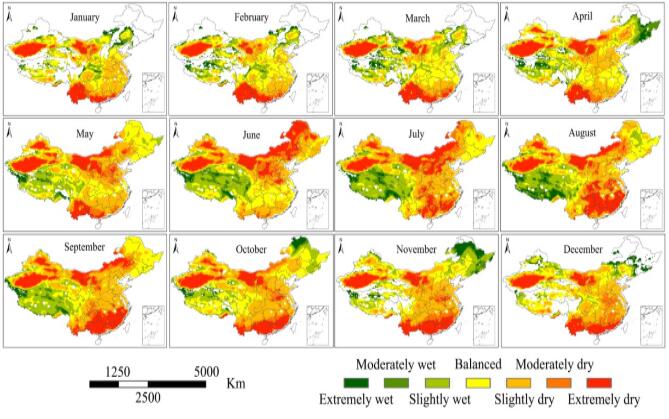Satellite-based drought indices have been proved to be effective and convenient in detecting drought conditions at regional and global scales. However, most current drought indices are based on the visible/near infrared/thermal remote sensing,which might be influenced greatly by cloud, atmospheric water content and rain-fall. Microwave sensors can overcome the shortages of visible/near infrared/thermal remote sensing and show to be another important approach for drought monitoring due to its all-weather working advantages. But to date, the application of microwave vegetation drought indices in drought monitoring has not been thoroughly investigated.
Dr. Xiuzhi Chen and phD Liyang Liu from South China Botanical Garden Chinese Academy of Sciences, for the first time, constructed a microwave derived Temperature Vegetation Drought Index (TVDI) - MTVDI based on the theory of optical TVDI using the brightness temperatures (Tb) from the Advanced Microwave Scanning Radiometer (AMSR‐E) onboard Aqua satellite. The time-series drought assessments across China from 2003 to 2010 indicated that the trends of the proposed MTVDI showed the most negative correlations with the variations of precipitation, P/PET and SM, and showed best performances of significance test in most regions of China. Moreover, the MTVDI could better separate the drought levels in different degrees than MODIS-derived TVDI.
Our results showed a great potential of using MTVDI for long-term large-scale drought monitoring, just as the editor said “improvement of using microwave remote sensing Tb for drought assessment is a very interesting topic”. This study was supported by the National Natural Science Foundation of China, the Natural Science Foundation of Guangdong Province, China, the Pearl River S&T Nova Program of Guangzhou, Special Plan Project of Guangdong Province, and the Key Programs of the Chinese Academy of Sciences.
Reference: Liu, L., Liao, J., Chen, X., Zhou, G., Su, Y., et al. (2017). The Microwave Temperature Vegetation Drought Index (MTVDI) based on AMSR-E brightness temperatures for long-term drought assessment across China (2003–2010). Remote Sensing of Environment, 199, 302-320. DOI: https://doi.org/10.1016/j.rse.2017.07.012.

Figure 1. The monthly variation of MTVDI across China
